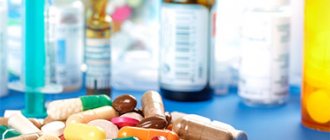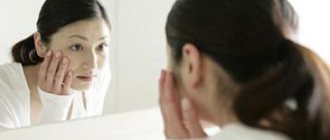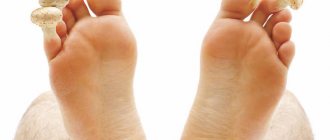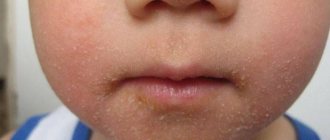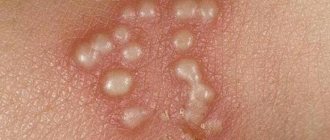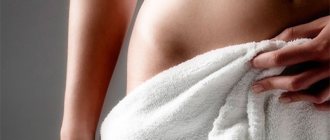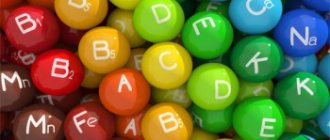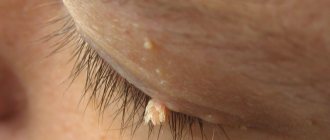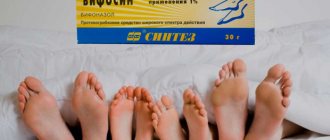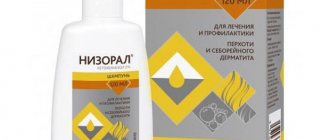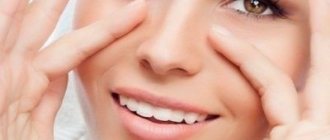Factors influencing the healing of a weeping wound
Non-healing weeping abrasions, ulcers, cuts are not uncommon. Factors influencing their formation:
- age;
- weight;
- secondary infection;
- reduced immunity;
- problems with blood circulation in the affected area and the body as a whole;
- chronic concomitant pathologies (diseases of the heart, blood vessels and respiratory system, diabetes mellitus, varicose veins, cancer).
An open wet wound is treated comprehensively. You can try at home, but after visiting a doctor.
Eplan
The drug is used to eliminate the following troubles:
- burns;
- purulent wounds;
- ulcers;
- bedsores;
- scabies;
- psoriasis.
Eplan
When applied to a damaged area of the skin, it has a wound healing effect, as well as a number of the following effects:
- affects the process of blood clotting;
- relieves inflammation and pain;
- promotes the synthesis of prothrombin, which cleans the wound of infections and purulent formations;
- accelerates the processes of restoration of damaged cells.
In case of minor damage, the ointment is applied to the skin in a thin layer, rubbed a little and left to be completely absorbed. After some time, the procedure is repeated. If the wound is large and there is suppuration in it, then the product is not applied to the skin in its pure form. To do this, use an overlay soaked in ointment, which is fixed on top with a bandage. The effect of the drug lasts approximately eight hours after use.
Treatment tactics and drug review
Treatment of a weeping wound should be thoughtful, step-by-step. The choice of drug is made by the doctor; self-medication may not be effective or may harm the body. You should consult a doctor if the area does not heal for 5 days, but becomes more and more wet. In such a situation, hospitalization will be required. Treatment must be prescribed by a doctor.
Drying ointments for wounds
The basis of treatment is drainage of fluid and drying of the wound area on the skin. For this purpose, Baneocin is used - it disinfects, has a bacteriostatic effect and dries. Use Chlorhexidine and Dioxidin ointment.
Powders
Powder for the treatment of weeping wounds gives a good result, but the powder can be used for minor injuries, those that are shallow, there is no large area of damage and blood. Of the powders, the most popular drug is Gentaxan. The substance gives a good effect, it is a powder with antibiotics, used topically for healing. The drug destroys pathogenic microorganisms that have entered the injured area of the skin. Actively blocks the progression of infection. Accelerates healing, creates a barrier to the development of suppuration. Has an antibacterial effect. Eliminates toxic waste products of dangerous microorganisms.
Plaster, napkins
The therapeutic effect of wipes for the treatment of trophic ulcers is provided by the drugs Activetex, Proteox-TM, Koletex, Multiferm. The wipes absorb well. Patches can be gel or film based. They are used to fix the bandage on the affected area on the epithelium. It is especially important to use adhesives for dressings that need to remain moist. Many contain a special absorbent pad.
The best plasters for weeping wounds are Elastic, Advance, Hydrofilm, Steril, Plastopix and Omnifix.
Wound healing agents
Wound healing agents for weeping wounds have an effect that is aimed at accelerating metabolism. The drugs are applied under a bandage if the damage is large in area, or open when the damage to the skin is no more than 10 mm in diameter. The most effective remedies with a healing effect are Actovegin, Solcoseryl, Levomekol, Bepanten, Methyluracil. It is necessary to choose a drug under the guidance of a doctor; treatment agents have contraindications. Not for use on mucous membranes.
Folk remedies
If the weeping injury is not serious, it can be treated at home using alternative medicine recipes. Traditional therapy always comes first. An antiseptic spray can be used for treatment. To prepare it, you will need 20 ml of saline solution, to which add 3 drops of tea tree aroma oil, 2 drops of fir aroma oil, 1 drop each of lavender and eucalyptus oils. Pour the prepared medicine into a spray bottle and treat the wound before each application of medical ointment. A compress of steamed onions will help with regeneration and healing.
You cannot replace drugs with traditional recipes. The methods can be used simultaneously, but with the permission of the doctor.
Protective means
This is the name for topical preparations designed to protect the skin from the negative effects of external factors. They are used in production when working with harmful substances - caustic acids and alkalis, salts of heavy metals. They are also in demand in everyday life when using solvents, insecticides, and household chemicals. Protective dermatological preparations are divided into the following groups:
- hydrophobic, the composition of which is represented by components insoluble in water. Designed to protect the skin from water-based chemicals such as acids and bases;
- hydrophilic contain ingredients that are soluble in water. They are actively used when working with anhydrous organic dilutions, petroleum products, oils, fats, varnishes, paints, resins;
- leather cleansers with a varied composition of components that easily remove any dirt.
Such products are easy to apply, do not cause withdrawal symptoms, and do not provoke the development of local adverse reactions. If a person uses any drug daily, it is recommended to take breaks for 1-2 months to prevent addiction.
One of the most popular representatives of protective products is Neutrogena in the form of cream, milk, and balm. It perfectly moisturizes dry skin, and after its application a thin film is formed that is impenetrable to external irritants. The usual fatty baby cream with phytoextracts of string and chamomile, Lux, Nourishing, Velor cosmetics and many others have similar properties.
Features of treatment for various diseases
To speed up the healing of weeping diabetic wounds, it is necessary to create special conditions. First, treat with an antiseptic. If there is swelling and inflammation, antibiotics are used in the form of cream and ointment. It would be useful to use vitamins to improve your immunity.
It is important to cleanse the epithelium of harmful microscopic organisms and cells that have died. The damage is washed with saline solution. Doctors often advise doing local mini-baths with turbulent water movement. Therapy must be prescribed by a specialist, be step-by-step, according to a scheme. Treatment of non-healing wounds on the legs starts with treating the affected area. If you delay treatment, complications will begin and the person may die.
Alcohol-based antiseptics and brilliant green are prohibited; they dry out the skin and can even cause a burn. Each patient should stock up on Chlorhexidine, Potassium permanganate or Furacilin. The solution must be used according to the instructions. It is necessary to wash the wound area with medical gloves so as not to infect it, as is done with an inflamed pimple or a mole that has begun to turn red. Sterile materials should be used. To disinfect the skin, apply an ointment containing silver, metronidazole and other antimicrobial substances.
If an inflammatory process has developed on a weeping injury, antibiotics Levomekol or Levosin are prescribed. If the skin begins to itch, there may be an allergy to the drug, it should be discontinued. When the damage is delayed, the crust should not be strongly tightened; moisturizers Trofodermin or Methyluracil ointment should be used. It is necessary to bandage 2-4 times a day. If the lesion becomes red or severely festered, surgery may be required.
Healing leg ulcers due to varicose veins is a complex and lengthy process. Veins that are swollen are the main sign. Treatment of trophic weeping ulcers follows a scheme. The surface is treated every day. Antiseptics help. You can wipe it with Furacilin and Miramistin.
If the wound has festered, it is necessary to apply a sterile dressing with hypertonic sodium chloride solution. It is important to quickly clean the ulcers, healing depends on this. After washing, medicinal preparations that stimulate regeneration should be applied.
Medicines are selected individually, but Levomekol, which heals and restores, is a universal drug.
If a large, weeping wound itches, use antihistamine gels, Fenistil. If it festers, use Argosulfan. It is important to carry out vitamin therapy, increase immunity, any respiratory disease can aggravate varicose veins and complicate the treatment of ulcers. It is imperative to take phlebotonic drugs. Do not wear compression garments. If the granulations become crusty, epithelization has started. It is important not to tear off the crust; it should come off on its own, and young skin will form underneath. They make bandages that create protection from various types of damage. The operation is performed when the damage is huge and deep.
If severe swelling has developed after casting, Salicylic ointment is suitable for treatment. It should be applied in drops and a covering bandage should be made. Doctors recommend Ichthyol ointment. Streptocide must be crushed in advance and the area sprinkled with powder.
Zinc ointment will help if the affected area gets very wet. Troxevasin is used for swelling due to varicose veins, and Heparin ointment is used for thrombophlebitis, as a complication of varicose veins. Edema is well eliminated by Bodyaga, the drug Eplan.
In any case, you need to see a doctor, injuries can cause serious complications. An ointment for weeping wounds, a set of therapeutic measures should be prescribed by a doctor, you should visit a therapist who will give a referral or a surgeon. The specialist will conduct an examination, assess the extent of the damage, and prescribe therapy.
Keratolytic agents
In dermatology, keratolytics are substances that can quickly exfoliate the upper keratinized layer of the epidermis. This stimulates the formation of new and healthy cells in places of damaged tissue. Thanks to their exfoliating effect, components of other medications penetrate into inflammatory lesions better and faster, which significantly speeds up recovery. The most famous keratolytics:
- salicylic acid;
- urea.
The latter also has a moisturizing effect, preventing water loss from the dermis and epidermis. Urea is included in not only medicinal but also cosmetic products. And salicylic acid is contained in Akriderm SK, Belosalik, Betasal, Betasalik, Daivobet, Elokom, Momat, Lorinden. On its basis, Salicylic ointment and Zinc-salicylic paste are produced.
What is prohibited to do and possible complications
For wound therapy, special treatment rules must be followed. If the area does not heal for a long time, you need to visit a surgeon. The same applies to postoperative sutures and bedsores that do not heal. Prohibited actions in case of wet damage:
- Interrupt therapy. Treatment and dressings daily, sometimes 2-3 times a day.
- Bandage the injured area with unclean hands. If there are no medical gloves, your hands should be treated with an antiseptic, or, in extreme cases, washed with soap.
- Peel off dried bandages. They are soaked with water.
- Use expired medications to treat weeping wounds and do not follow the instructions for the medication.
If during treatment the amount of fluid discharged increases, the wound begins to ooze and becomes larger in size, throbbing pain, swelling or redness is noticed, or the temperature rises, consult a doctor immediately. If treatment is not carried out correctly, the ulcers grow and affect nearby tissues. Complications such as sepsis and lymphadenitis may develop. If you start the process, the damage will develop into gangrene. Then amputation will be required.
You should not delay your visit to the doctor; one way or another, the course is prescribed by the doctor. Therapy should be comprehensive, with regular supervision by a specialist.
The article has been verified by the editors
Levomekol
Levomekol
The drug can be bought in an aluminum tube or glass jar, which depends on the manufacturer. The ointment contains two main components - an antibiotic and an immunostimulant. A huge advantage and advantage of this drug is that bacterial resistance to it does not develop quickly.
The antibiotic chloramphenicol is an active substance that fights various harmful microbes. The immunostimulant methyluracil, in turn, helps improve metabolic processes at the cellular level, and also relieves inflammation and has a quickly healing effect. The ointment is often used for purulent wounds in which the inflammatory process has already begun.
Levomekol is applied to the wound with a special napkin, and then applied directly to the damaged area. The product is used every day until the wound is completely cleansed. In case of severe suppuration, the drug is injected into the cavity using a medical syringe. Before such manipulation, you need to slightly warm the ointment to a temperature of 36 °C.
How does a wound heal after surgery?
The first and most important thing that the surgeon does to speed up the healing of the wound after surgery is to bring its edges together using suture material. In other words, it puts stitches. Thanks to natural regeneration processes, over time the wound grows together and is covered with new tissue.
If you go deeper into biology, you can identify three sequential healing processes.
The first is epithelization. The resulting squamous epithelial cells cover the most affected areas (with the deepest tissue damage).
The second process is convergence or contraction of the wound, when the edges join together, completely hiding the exposed mucosa. And then the third, final mechanism of postoperative wound healing occurs - collagenization, when collagen fibers cover the delicate skin of the wound, providing it with lasting protection.
Important! If a person is healthy, then everything happens quite quickly and efficiently. A weakened or sick body sometimes does not have enough biological capabilities for this, so it is necessary to select special auxiliary drugs for wound healing and care for it more carefully.
